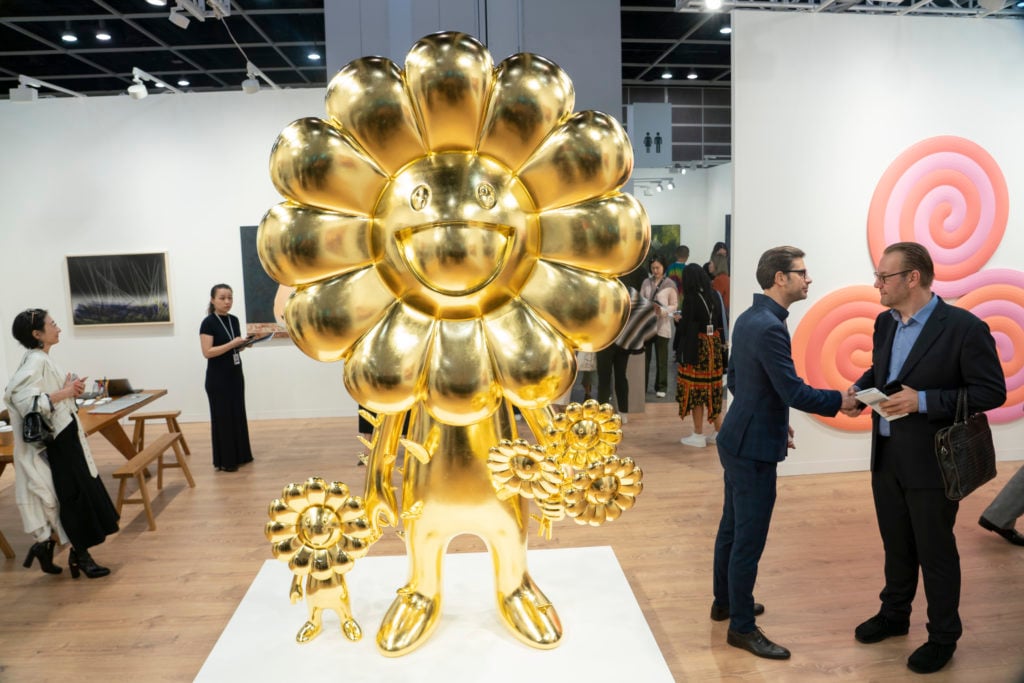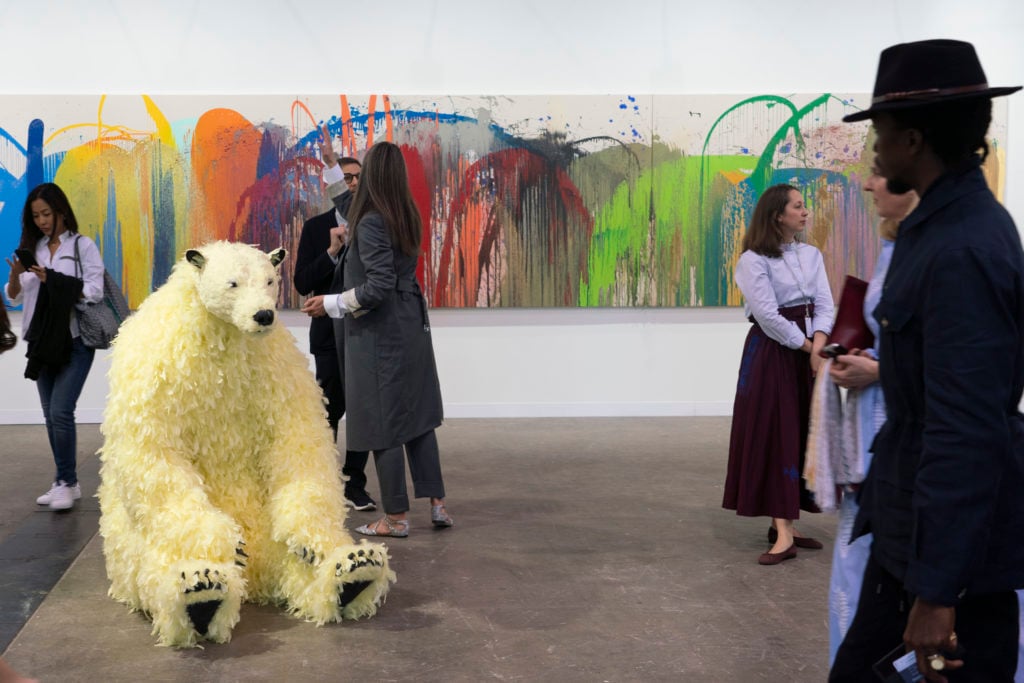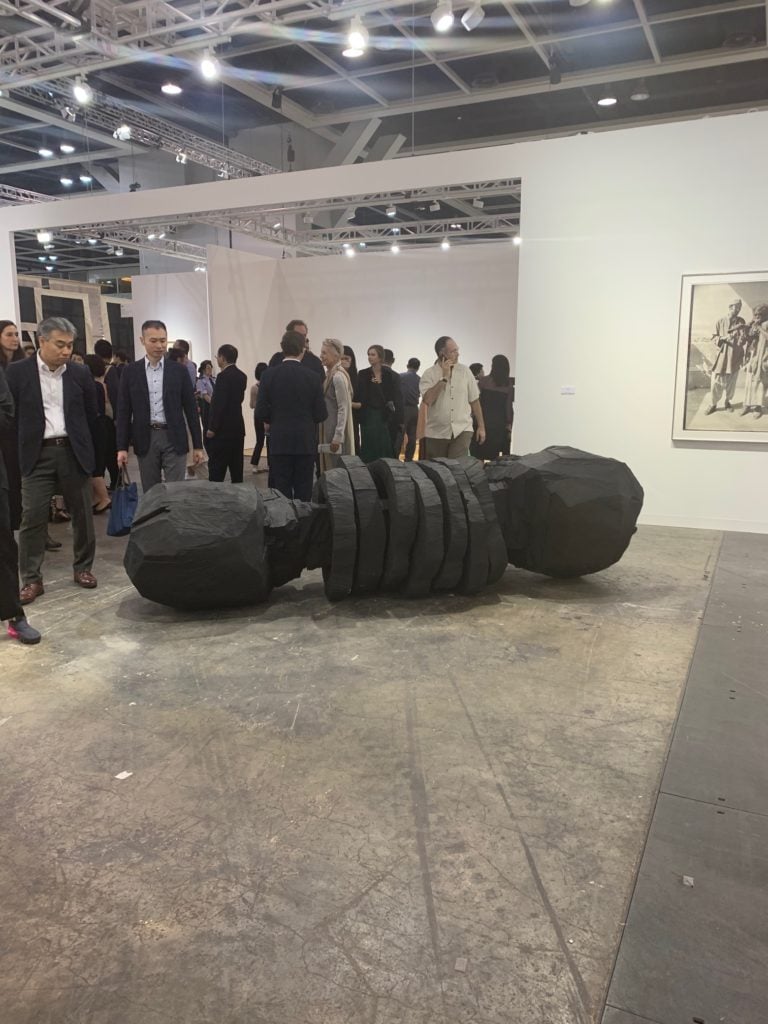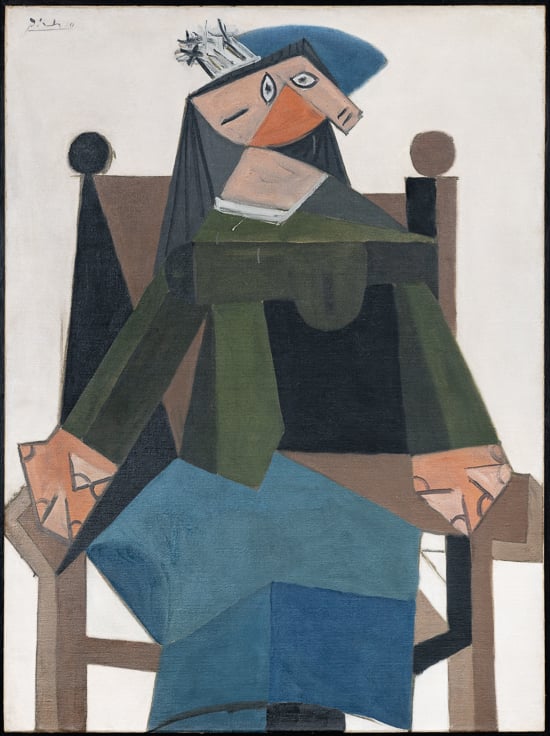Art Fairs
Art Basel Hong Kong Kicks Off With a Buzz—and a $19 Million Picasso—as the Market’s Center Drifts Eastward
The seventh edition of the fair opened to swift sales, despite pre-opening jitters about the mainland Chinese economy.

The seventh edition of the fair opened to swift sales, despite pre-opening jitters about the mainland Chinese economy.

Julia Halperin

A mysterious Picasso portrait from 1941 priced at $19 million, a David Hockney painting of a legendary curator at $15 million, a piercing Egon Schiele for $12 million, and—fittingly—a hot pink Andy Warhol painting of a dollar sign listed at $8.9 million were among the priciest works on offer at Art Basel Hong Kong, which opened its doors to VIPs today.
An estimated 40,000 people have traveled from overseas for the seventh edition of Asia’s largest art fair. As the country weathers an economic slowdown and continued uncertainty over a looming trade war with the US, collectors from mainland China were less active on opening day than in the past, but the aisles were nevertheless abuzz.
“That’s the thing about Hong Kong,” said New York-based dealer Sean Kelly. “It’s not just China—it’s Singapore, it’s Malaysia, it’s Taipei. It’s not one market.”
Marquee early sales included a work by Andy Warhol at White Cube for $2.85 million and an Alice Neel painting for $1.7 million at David Zwirner, which sold out its entire booth during the VIP preview.

Visitors at Art Basel Hong Kong on March 27, 2019. (Photo by Theodore Kaye/Getty Images)
Increasingly, the market’s center of gravity does feel as if it is being pulled eastward. Alex Logsdail of Lisson noted that a number of American collectors had opted to take the 12- to 16-hour flight to Hong Kong instead of attending Art Basel Miami Beach in December. Miami-based collector Don Rubell, Italian collector Patrizia Sandretto Re Rebaudengo, and French collector Sylvain Levy were among those spotted who made the journey from overseas.
Sometimes, the fair’s international appeal can lead to an anticlimax. Dealer Thaddaeus Ropac brought a 2,558-pound, $1.7 million, bronze sculpture by Georg Baselitz all the way to Hong Kong—only to sell it to a man from Austria. “We are selling fast, but to Europeans and Americans,” he told artnet News. “They are faster—Asian buyers will consider and are a bit disappointed if it’s sold, but they don’t feel so much urgency.” A new Elizabeth Peyton watercolor priced at $95,000, and a fire-hued Imi Knoebel on aluminum listed at $226,000, were among the gallery’s early sales to non-Asian buyers.
Ropac was holding out hope, however, that a 1980 Rauschenberg combine—complete with a bucket and an electric light—would find an Asian buyer. “Every year we bring a Rauschenberg, and every year we sell it to a European,” he said with a sigh.

Georg Baselitz’s Zero Ende (2013) at Thaddaeus Ropac. Photo: Julia Halperin.
Some dealers made the decision to reserve certain works exclusively for Asian clients in an effort to broaden their artists’ markets here. Lisson swiftly sold a large abstract painting by Stanley Whitney listed at $165,000 and a yellow geometric sculpture by Carmen Herrera for $450,000, both of which were earmarked for Asian buyers.
Beyond the confines of the fair, Hauser & Wirth reported it had sold out its Hong Kong exhibition of work by Louise Bourgeois within one day of the opening, mostly to Asian collectors, for prices ranging from $250,000 to $4 million. Similarly, Pace Gallery sold its entire exhibition of luminous paintings by Mary Corse largely to Asian clients for prices ranging from $300,000 to $650,000.

Pablo Picasso, Femme Assise Dans un Fauteuil (1941). Courtesy Luxembourg & Dayan.
The most expensive works at the fair—led by the $19 million Picasso painting of a woman who is believed, but not confirmed, to be Dora Maar, at Luxembourg & Dayan—were largely by marquee Western names. But a handful of Chinese paintings were also on offer for prices that cracked the $1 million mark. Among a number of works by auction supernova Zao Wou-Ki at the fair was a $1.6 million composition inspired by J.M.W. Turner at Cardi Gallery.
A major presentation at Hong Kong’s 10 Chancery Lane Gallery paid tribute to the 40th anniversary of a legendary guerrilla exhibition organized by the Stars Art Group, non-academy-trained artists who hung their work on the railings of the National Art Museum of China in Beijing. Huang Rui’s The Guitar’s Story (1979), which was shown in the second Stars exhibition the following year, was on offer for a price in the low seven figures. (The Cubist-inflected painting of a woman relaxing and listening to the guitar may not look groundbreaking to Western eyes, but “everything before this was propaganda art,” noted the gallery’s Katie de Tilly. “This was a turning point.”)
Like at all fairs, demand was not evenly distributed across sectors—and big-box galleries are only increasing their dominance. One dealer said Art Basel Hong Kong was already the most successful fair his gallery had done in the past six months; others had not made any sales by the end of the day. One observer noted that on the whole, local collectors were more inclined to place a work on hold and wait to see if the dealer might lower the price than to make a deal straight away.
“Some fairs are one-day fairs,” Lisson’s Logsdail said. “This is a five-day fair.”